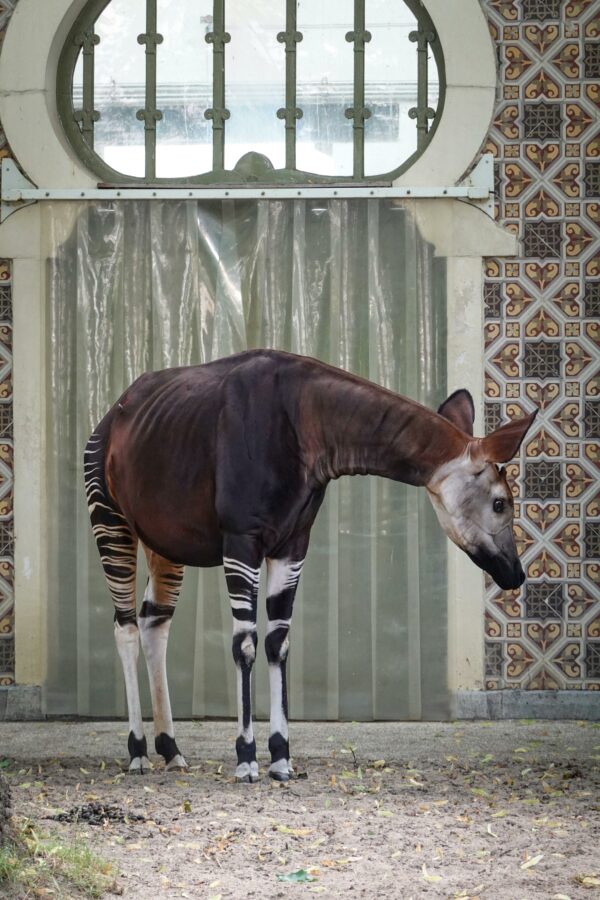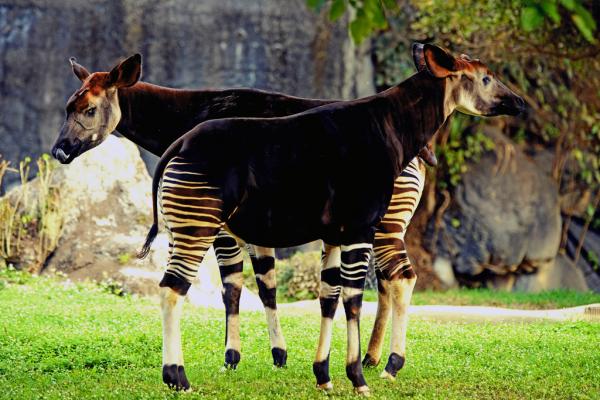Delving into the wonders of wildlife, we often stumble upon creatures that leave us in awe. One such magnificent creature begging our attention is the okapi. Famous for its unusual appearance and intriguing lifestyle, let’s unravel some captivating okapi facts. Merging the charm of giraffes and the elegance of zebras, get ready to be surprised by this amazing mammal!
A Detailed Look into Okapi Facts

The okapi, predominantly residing in the Ituri Rainforest in central Africa, has a uniquely diverse diet consisting of tree leaves, fruit, ferns, grasses, and even some types of fungi. It intriguingly consumes plants that are toxic to us humans! The widely known fact of its physical similarity to zebras, owing to the striking markings on its legs, can be deceptive. In reality, this creature shares a much closer bond with giraffes.
Distinctive Features

Donning a vibrant coat that ranges from dark chestnut to reddish-purple, okapis boast horizontal stripes extraordinarily similar to a zebra’s. These markings possibly serve two essential functions – camouflage and aiding young ones to trail their mothers through the seemingly impenetrable rainforest underbrush. Also, giving giraffes a run for their money, okapis have long, flexible, blue tongues that are 12 inches long!
Okapi Territory and Lifestyle

The solitary nature of okapis is one of the most intriguing okapi facts. Preferring a life of solitude, their territories are marked by scent glands on their feet or urine. The males exhibit utmost protectiveness of their territory but interestingly permit females to pass through for foraging.
- Activity peaks during the daytime for these solitary creatures.
- Sense of smell is their trusted ally during breeding season.
- The male showcases dominance with primeval displays like stretching the neck and tossing the head.
The Cycle of Life

Another charming aspect of okapi facts surrounds their gestation and upbringing. After a gestation period of about 440 days, the female retreats into dense vegetation to give birth. The newborns weigh between 14-30 kg and start nursing within the initial thirty minutes followed by standing.
Over the ensuing day, they trail the mother around the rainforest, acquainting themselves with this vast, new world. As a few days pass, the young okapi chooses an ideal spot to seclude itself for safety. This hiding strategy aids in their rapid growth and shields them from potential threats, predicting a lifespan of around 30 years especially in captivity.
Intriguing Okapi Facts – A Wrap Up

With all these charming okapi facts revealed, the intriguing world of this wonderful mammal indeed deserves a pause for admiration. There is an undeniable allure surrounding this reclusive forest creature, offering us a chance to marvel at yet another breathtaking spectacle that nature has in store in the fascinating world of wildlife!
Related Resources: